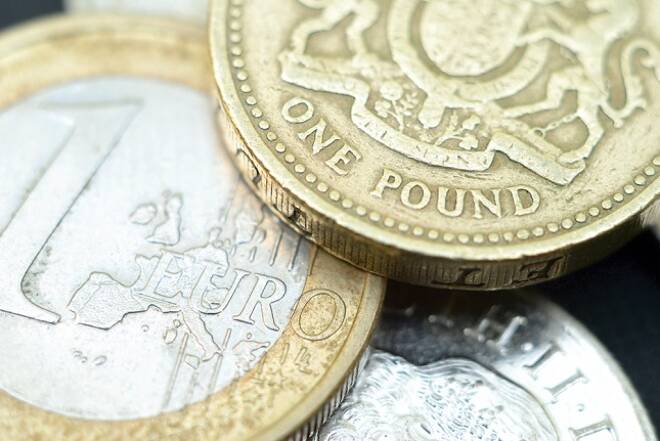Could EUR/GBP Replace Cable as The Main Outlet for a Further Rally in The Pound?
By:
31 March 2021 - The recent retreat we have seen in sterling has raised questions over whether the strengthening trend seen since late September has come to an end. The struggle to make further topside progress has even raised suggestions that the year’s expected pro-sterling news is now fully priced in and that further positive developments will be required if the upwards momentum is to continue.
At a minimum it is hard to argue against the claim that possibly sterling has entered a consolidation phase, cable seemingly caught within a broad 1.37-1.40 channel and Eur/Gbp within a narrower 0.8550/0.8700 band. However, by the same measure, sterling continues to retain most of the gains made since September, approximately 11%/9% against the dollar/euro respectively. It is this fact that suggests underlying support for the pound remains in place.
But if this is the case, and if we are in a consolidation phase, will the same dynamics be in play once this phase has passed? Specifically, with the outlook for the US economy now looking brighter, will the main outlet for renewed sterling strength be expressed against the euro, rather than the dollar? The suggestion is that this may be the case.
Progress with vaccinations
One of the key drivers behind sterling’s ascent has been the success of the UK’s vaccination programme. Significantly ahead of the EU and to a lesser degree the US, this success has provided the prospect of the UK emerging first from the burden of lockdown restrictions and presented the opportunity for a head start in its economic recovery. While the argument with the EU over the supply of AstraZeneca vaccines could cause a slight slowing in the pace of UK inoculations, the significant advantage it will still hold over the EU cannot be ignored. While this gap exists, UK prospects will remain brighter than the EU’s, providing support for the pound vis-à-vis the euro.
Early end to lockdown restrictions and better growth prospects
Lockdown restrictions are already being eased in the UK, to be completely removed by 21st June. In contrast, further restrictions are being imposed in parts of the EU, notably Germany, Italy and France, where progress with restoring economic activity appears to be going backwards rather than forwards. Unsurprisingly, the UK is expected to outperform the EU this year: the OECD forecasts 2021 UK GDP growth of 5.1% compared to 3.9% for the euro-zone. Furthermore, the balance of risk appears tilted to the topside for the UK as opposed to the downside for the EU.
This has implications for monetary policy, the BoE expected to begin tightening ahead of the ECB. Indeed, this is already anticipated in the markets, where 10-yr Gilt yields are up some 58bps since January compared to just 26bps for their German equivalent and providing an absolute return advantage of over 1%. This interest rate differential looks set to get wider, seeing the pound become increasingly attractive to international investors versus the euro.
Confidence in the UK economic recovery
The UK Government in March began laying out plans for scaling back the huge fiscal support currently provided. The jobs furlough scheme was extended one final time to end-September while taxes will start rising from next year as personal allowances are frozen. Corporation tax will also rise in 2023. Together, these two measures alone are forecast to generate some £65bn in revenue, with more tax rises expected going forward. This suggests a high degree of confidence in the strength of the UK recovery. Contrast this with the EU, where instead of focusing on recovery, officials are instead engaged in working out how to distribute the approximate Eur750bn pandemic recovery fund. The direction of travel between the UK and the EU could not be more different.
A market still underweight sterling
Finally, CFTC data suggests a market relatively underweight sterling. The latest figures (16th March) show net long sterling positions held by the asset management community to be 12,350, compared to 340,470 for the euro. This suggests a pool of untapped potential support for sterling while demand for the euro may already be satiated.
In summary
In summary, the sterling outlook remains positive, the combination of continued vaccinations, lifting of lockdown restrictions and rising yields all converging to support the pound. With the US also appearing to be moving past the worst of the pandemic, but the EU continuing to languish, the pertinent question for a resumed sterling rally might no longer be how high cable could trade, but rather how far Eur/Gbp might fall.
Opinion editorial by Stuart Cole, chief macro strategist at Equiti Capital
‘’This material is provided for informational purposes only and does not constitute financial advice, investment advice, trading advice or any other advice or recommendation of any sort offered or endorsed by Equiti Capital. This material is not, and is not intended to be, a “research report”, “investment research” or “independent research” as may be defined in applicable laws and regulations worldwide.
Please see the full disclaimer here: https://www.equiticapital.co.uk/media/11057/disclaimer.pdf ’’
About the Author
Stuart Colecontributor
Following graduation Stuart worked as an economist at the Bank of England, working in various roles. With a passion for macro-economics and the markets, he has worked in various institutions in the City before joining Equiti in 2020. He has been published regularly, including by the Bank of England and the OECD.
Advertisement
